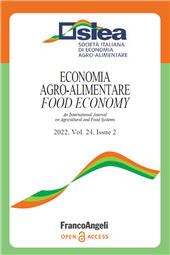The Circular Economy in the Agri-food system : a Performance Measurement of European Countries
1-35 p.
Agriculture and the agrifood industry are central to fostering economic growth and the Sustainable Development Goals' targets. However, to meet the world's future development, it is necessary to make the agrifood system more resourceefficient. The transition towards the circular economy (CE) paradigm is commonly seen as a promising strategy to overcome the critical issues affecting the sector. However, different theoretical and practical problems still need to be solved. Specifically, the CE performance measurement of specific sectors or national systems is crucial as it helps to identify and correct any deviation from the vision set out for achieving the sustainable development objectives. This article aims to contribute to CE research, focusing on European agriculture and the agrifood sector.
Drawing on the EEMRIO database EXIOBASE v3.7, this paper estimates the level of circularity in the European Union countries and the role of agriculture and agrifood in determining circularity. Results showed that circularity in the EU is low and significant differences between countries exist. Agriculture contributes to 80.5% of the entire amount of recycled materials in Europe. Vice versa, the contribution provided by the agrifood sector is limited to 1%. Some policy implications derive from this study. [Publisher's text].
Ist Teil von
Economia agro-alimentare : XXIV, 2, 2022-
Artikel aus derselben Ausgabe (einzeln erhältlich)
-
Informationen
ISSN: 1972-4802


